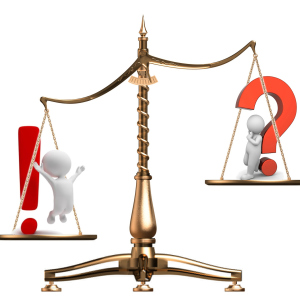Under the request, "how to find neutrons" is understood as the method of searching for the number of neutrons in the atom. The neutron is a heavy particle that does not have an electric charge and together with the proton is the atomic core of the element. The number of neutrons in the atom is determined using the Mendeleev table.
How to find neutrons - We are looking for the number of neutrons in atoms
- We take the Mendeleev table and find the desired element.
- As you know, the chemical elements are not randomly located. The sequence number of the element corresponds to the number of protons in one element atom - the atomic number. Here it is necessary for us. This is the largest number in the cell, it is easy to detect, since the elements follow each other almost in order (ascending).
- We remember the atomic number.
- We find the mass of the atom. This value is also located in the cell of the periodic system, whose number of neutrons we are looking for. As a rule, the mass is recorded in smaller font than the atom number, in the form of a decimal fraction. More complex elements are enclosed in square brackets.
- For calculations, the atomic mass is rounded to an integer.
- Since the core of the atom consists of neutrons and protons, then by subtracting from the mass of the proton atom (atomic number), we obtain the magnitude of the neutron content in the atom of this element.

How to find neutrons - an example
- For example, we need to find how many neutrons are in the zirconium atom.
- We will use the formula: n \u003d m - n, where:
M is the atomic mass, n is the atomic number (number of protons), N is the number of neutrons.
- We find zirconiums in the Mendeleev table, it should always be at hand for chemical calculations.
- Its atomic mass is 91.22, rounded to 91.
- Atomic number is 40.
- We obtain that in the zirconia atom is 51 (n \u003d 91 - 40) neutron.

How to find neutrons - find how many neutrons have isotopes
- Isotopes are a variety of one and the same element, but having a different mass of atoms. But the atomic number we learned to look higher, they coincide.
- You need to know that all isotopes of a particular element are placed in a single cell in the Mendeleev table.
- Since the atomic number at the isotopes of the same element coincides, which means we only need to find the atomic mass to calculate the neutron value.
- The atomic mass of the isotope is very simple - it is enclosed in the very name of the isotope. For example, O-16, O-17, O-18 isotopes of oxygen with atomic weight 16, 17 and 18, respectively. Sometimes the atomic mass is written as the upper index to the left of the chemical symbol. element.
- Thus, we know all components for the formula. We will not be difficult to calculate how many neutrons are in the isotope.

How to find neutrons - example, isotope O-17
- The atomic number of all oxygen isotopes, as the element itself is 8.
- The atomic mass is indicated in the name of the isotope - it is equal to 17.
- Calculate according to the formula N \u003d M - n, that the amount of neutrons in the O-17 isotope atom is 9 (17 - 8).

Now you know how to calculate the number of neutrons in the atom of any element and isotope. Of course, for the calculations you will always need to have a periodic table of Mendeleev at hand.

















